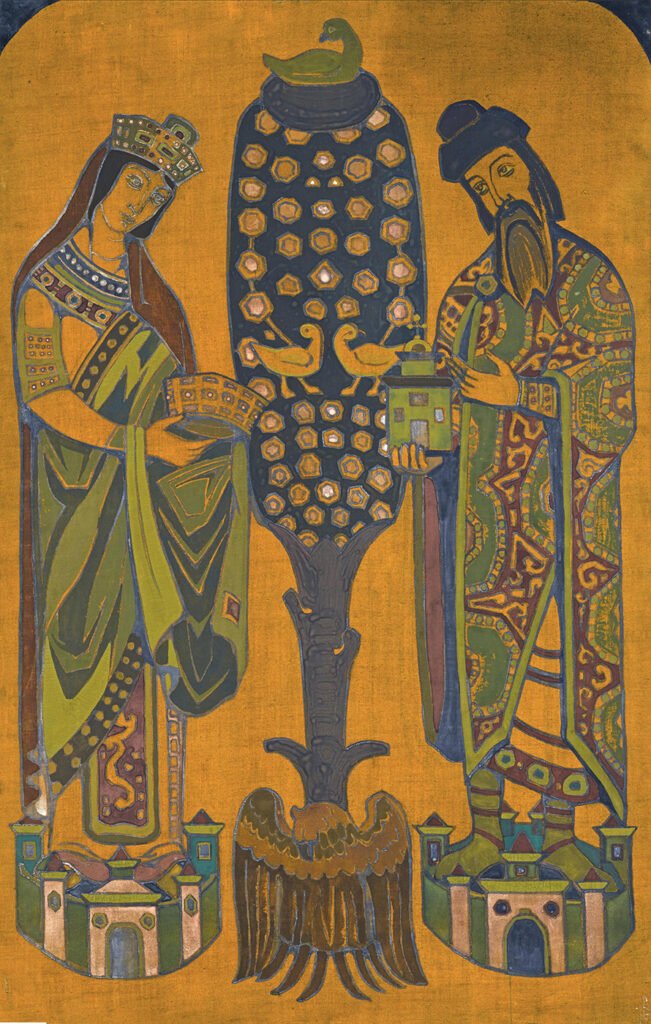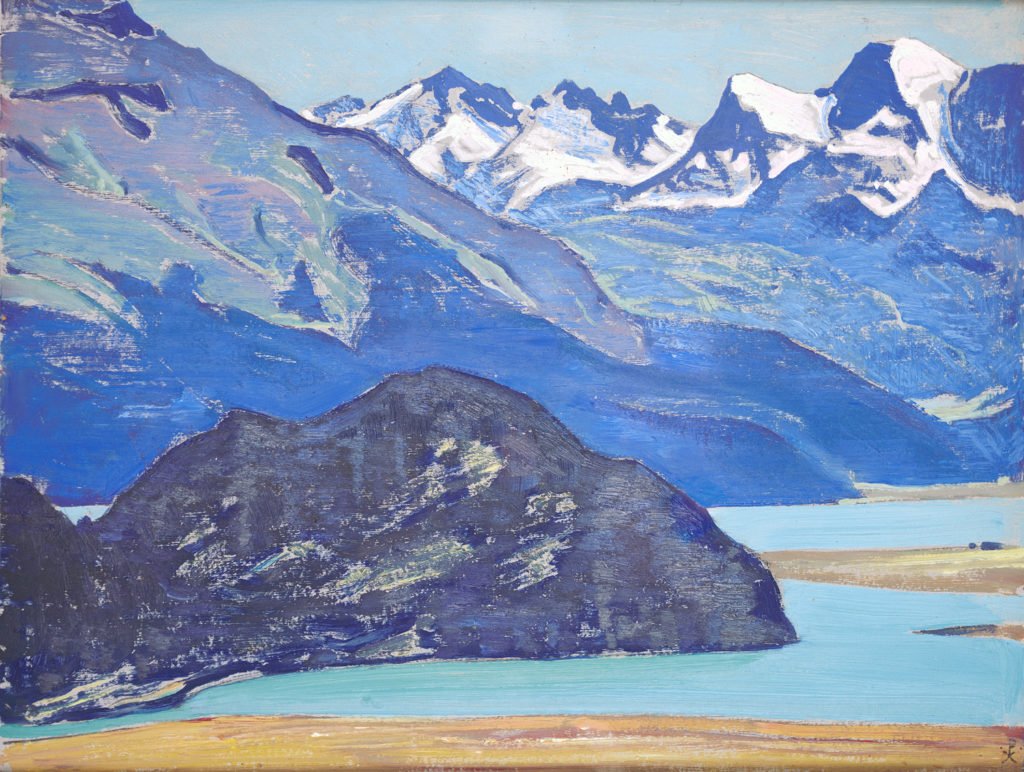Nicholas ROERICH
Lotus
1933
74.4×116.9cm, tempera on canvas
Nicholas Roerich was an artist, writer, archaeologist, philosopher and traveller. One of the brightest representatives of symbolism and modernism, his legacy is enormous. More than 7,000 paintings are exhibited in famous art galleries in different parts of the world.
At an early age he showed a curiosity and talent for a variety of activities. When he was nine, a noted archeologist came to conduct explorations in the region and took young Roerich on his excavations of the local tumuli. The adventure of unveiling the mysteries of forgotten eras with his own hands sparked an interest in archeology that would last his lifetime. Through other contacts he developed interests in collecting prehistoric artifacts, coins, and minerals, and built his own arboretum for the study of plants and trees.
Roerich left Russia in 1917. He lived and worked in Scandinavia and England. In 1920 the Roerichs immigrated to the United States. In 1923 Roerichs’ longtime dream came true when they embarked on their Central Asian tour, visiting India, Chinese Turkestan, Altai, Mongolia and Tibet. Nicholas wrote about this expedition in his book ‘Heart of Asia’, in which he described these mysterious lands and peoples. Nevertheless, the images are nowhere as vivid as in the paintings that resulted from the expedition. In 1928, the family settled in the Indian Kullu Valley in the Himalayan foothills. Here they established the headquarters of the Urusvati Himalayan Research Institute, which carried out botanical and ethnological-linguistic studies and the exploration of archaeological sites. In 1929 the University of Paris nominated Roerich for the Nobel Peace Prize.
Nicholas Roerich was inspired by Buddhism. In the present painting he developed the essential theme of the Buddhist symbolism. It is a lotus. The Buddha compares himself to a lotus. The flower represents purity of the body, speech and mind, as if floating above the murky waters of material attachment and physical desire. According to legend, Gautama Buddha’s first steps made lotus flowers appear everywhere he stepped.
Provenance:
N. Roerich Museum, New York
Private collection, Zurich, Switzerland





